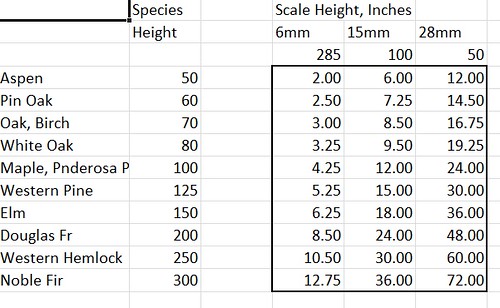So just for grins and giggles, here is a quick chart showing how tall trees should be, if we are matching trees to figures:

Moderators: dnichols, GHQ, Mk 1

Perhaps the "new math" has reached NL?Gompel wrote:I am always interested in trees and landscape in general, but where did you get that list from? It seems off to me.
I count in centimeters and meters, but if I convert your inches, those tree sizes seem to be what a tree can max. become under maybe perfect conditions. I mean, where I live (NL), trees are not often taller than 20m (roughly 30feet that is). Most adult trees are about 15m I think. 15meter = 1500cm -> 1:285 scale makes 5,3cm. That is just over 2 inch.
So maybe trees are taller in your area, but I wouldn't go as far as saying 'trees commonly range in heights up to 300 feet'. I think I can savely say that trees in Europe are commonly not taller than 30m (roughly 100feet that is).
What battlefields are you scaling?